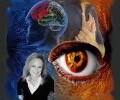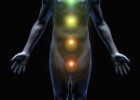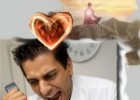Violence and Transcendence- Part III
In the previous two parts of this article, I discussed the power of the culture to keep the mind in a fight-or-flight response so that we use only the smallest part of our brain in situations that may bring up the insecurities that exist within, in essence creating a “counterfeit transcendence” function. Who would have thought the unexamined action of taking the executive position could promote an aspect of violence, the neuropathways of fight-or-flight reptilian responses and assist in thwarting the evolution of humanity? But at the very essence of an unexamined action resides the danger of the influence of the culture and its inherent tendency toward violence and the support of nonevolutionary ways.
A movie that I discuss in my book Apocalypse of the Mind is The Matrix, which portrays the role that the culture plays in keeping us within illusion. Neo, the main character, begins the breakthrough process that involves stripping away all ego defense and bringing about the rebirth of a new way of being in the world that requires a strong sense of inner faith. The challenges he faces lie in the culture attacking him and attempting to thwart any movement he makes to obtain total freedom of his mind’s illusion. This is because the culture has a strong hold on the neurostructure of our brain. Illusion only arises out of our mind’s fear, and when we activate our fight-or-flight responses, then we are lost to those illusions. We are reacting the same way that primitive human beings reacted when they were chased by a predator and they had to save themselves because, at that time, there was a need for humanity to populate the earth.
Violence in today’s culture reflects the ultimate separating function that is needed for a person’s psyche to understand and know itself. Because of the nature of violence, many people on an enlightened path refuse to explore this aspect of our humanity through a heart-centered compassionate state or even in a reflective moment. Instead, when we begin to understand the problems in the culture, our first inclination is to change the culture. This, of course, creates a greater resistance that is at times reflected in a group of people pushing back and challenging the effort of a movement toward change.
Violence exists in varying degrees, from an argument with a spouse, to a negative thought toward another person or about oneself, to the taking of one’s own life, the taking of another’s life, or the taking of many lives through war.
One should not go into the exploration of violence, and especially collective violence, lightly. These forces are powerful and insidious. When you explore collective dynamics without a stabilized state of consciousness, you will become unconscious to its force and power. Personally, in my own dealing with collective forces, the only approach that has worked is to seat my awareness in the heart-centered state of consciousness. Once in that awareness, I then engage these dynamics more safely without the intoxication of power or the victimization of powerlessness.
When we begin the process of “taking up our own cross,” then we must trust in the life process to create what the situation calls for and not what our ego demands, even though the situation may call for physical death. Heart-centered awareness allows a transcendent function to exist that does not activate the fight-or-flight response. A person can therefore act within the moment, co-creating the moment. There is no grabbing of control, and no experience of feeling victimized due to a lack of control and power.
My situation at the lake resort, when a man with a gun held me captive and I felt my fear of being shot in the head, led to the occurrence of something profound in that moment. I dropped my awareness into the heart center. My practice of working from heart-centered awareness for over 12 years, of taking small steps—such as bringing in experiences of dealing with an angry male boss, the fear of the loss of my marriage, the failure to gain the approval of a man, the loss of my identity as an engineer—began the process of developing new neural pathways in my brain so that now when I experience fear, the dropping of my awareness to the heart is automatic and assists in the engagement of the frontal lobes, not the reptilian parts of my brain. Evolution is occurring.
From my heart-centered awareness, the hostage situation became profound as my anxiety subsided and a fullness of the moment occurred: I was aware of only this moment, the man, the other woman, and myself. I had no desire to have power over this man. The man, Ed, directed the gun from the woman to me and then back to the woman. In his flailing around, he accidentally knocked off his baseball cap. I then took action that the swat team later told me was the exact opposite of what I should have done in a situation with a man holding a gun, because this type of action would provoke a man who needed to be in control into shooting. I walked toward Ed and then reached down, picked up the hat, and placed it back on his head, while saying, “You don’t want to be doing this.” I was not in denial that he would not shoot, as I understood that my dying might potentially result from this situation. Yet, based on what I did next, it would appear I was denial of the situation. I walked back in front of Ed, and the gun, and stood there. He looked at me, and within a few minutes took off out of the warehouse, shooting off a shot that I assumed was directed at the sky.
Thinking back upon this situation in the context of this article, I am aware that swat team members are trained in power-and-control dynamics and would have reacted out of the need to disempower Ed and empower themselves in order to get control of the situation. When I did not react out of power and control, Ed had no hook by which to manipulate me. Also, I did not render him powerless to my control. He continued to have freedom of choice. In this case, the situation called for him to leave.
One year later, he was released from prison, and he located me in a town south of the lake resort where I was living. He rang my doorbell, and when I answered, he asked a simple, yet not so simple, question. “What happened that day? I had the intention to kill you…something happened, and I am wondering if you felt it too. What was it?” My only response was to say that something did happen, but I could not really explain it.
For me, it was a breakthrough moment in which I surrendered out of the ego defense of fight-or-flight and reached a state of consciousness that placed me directly into the moment with complete acceptance for what is. The actions taken from this state of complete openness and vulnerability—present with the fear yet without the need to move into fight-or-flight victim dynamics—presented an opportunity to evolve as a human being and transcend cultural dynamics. This supports others into an evolutionary way of being…away from power and control dynamics our culture is ensconced with and into compassionate and selfless acts of an evolutionary existence.



